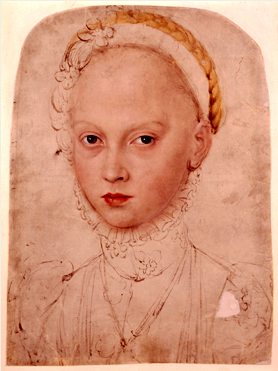Was there a gender crisis in sixteenth-century Europe?

Some historians argue that Reformation
Europe was characterized by a “crisis of gender relations.” Specifically, they
argue that the Protestants’ approach to sexuality and the institution of marriage
reflected a fundamental shift toward the patriarchal family; furthermore, they
argue, this shift came at the expense of women’s autonomy. The argument goes
something like this:
1) The Reformers preached a kind spiritual equality—that
every soul is equal before God, and gender makes no difference—and they also
endorsed the institution of marriage. By contrast, the medieval church had elevated
clerical celibacy above the estate of marriage.
- Consequently, the reformers advocated the
abolition of monasticism and insisted that priests should be able to marry;
- By closing female convents, however, the
reformers did as much harm to women as good: true, many nuns renounced their
vows at the earliest opportunity and married if they were able. But many convents
fought closure—especially convents “with high standards of learning and morality,
whose members were noblewomen or women from wealthy patrician families.”
2) It is also true that during the brief “evangelical
moment” between 1517 and 1525, women “found a public voice,” so to speak: taking
literally Luther’s doctrine of the “priesthood of all believers,” many women
began preaching or publishing their views on religion, criticizing the church,
and so on. Perhaps the boldest of these was a middle-class woman named Ursula
Weyda who in 1524 published a pamphlet attacking a local abbot:
If all women were forbidden to speak, how could daughters prophesy, as Joel
predicted (they would)? Although St. Paul forbade women to preach in churches
and instructed them to obey their husbands, what if the churches were full of
liars?
In addition, most Reformers abandoned the Catholic church’s opposition to divorce;
Reformed cities and towns placed family law under their own jurisdiction. By
attacking the established church, the reformers managed to break down conventional
gender roles—at least temporarily.
3) On balance, however, the reformers did not break sharply with traditional
male attitudes toward women:
- Their notion of the spiritual “equality”
extended no further than the process of salvation: the practical implication
of spiritual equality was conservative--rather like the “Freedom of a Christian,”
which both “liberates” the individual and obligates her absolutely.
4) What is more, by advocating marriage
for all, reformers caused a reconsideration of the place of sexuality in social
life: sexual renunciation was no longer connected with holiness.
- As marriage became the calling
for everybody, and since marriage was understood to be a hierarchical, patriarchal
institution, the Protestant reform of marriage had the effect of placing women
in particular under greater male control and domination;
- At the same time, the marriage
and child-bearing became the specific calling of women in general; the result
was that they were increasingly excluded from full and active participation
in the economic life of German cities and towns.
- The resulting “masculinization”
of society and the economy could not proceed without a parallel demonization
of femininity: consequently, the Protestant reforms tended to reinforce and
intensify existing misogynist stereotypes; by the same token, the reforms
tended to strengthen the association between male heterosexuality and domination.
As historian Lyndal Roper puts it,
The real man was a household head,
a little patriarch ruling over wife, children, servants, journeymen, and
apprentice…[and] what gave on one access to the world of brothers was
one’s mastery of a woman who guaranteed one’s sexual status.
5) But Roper also insists that this “crisis of
gender relations” cannot be attributed entirely to the Reformation; many of the
trends associated with it were already well under way by 1500—such as the trend
toward a more “masculine” economy.
- On balance, then, the Reformation helped
to intensify a “crisis of gender relations” that was already in the
making.
Image: Lucas Cranach the Younger, Portrait
of Duchess Elisabeth of Saxony (1564), Staatliche
Museen Preussischer Kulturbesitz, Kupferstichkabinett (Berlin-Tiergarten). Elisabeth was the daughter of Elector August of Saxon (1526-1586) and Anna of Denmark (1532-1585). Born in 1552, she was married to Johann Casimir, the Count Palatine, in 1570. The marriage not happy: Johann Casimir wsa attracted to the teachings of Calvin, while Elisabeth remained a follower of Luther. In 1585, Johann Casimir had her arrested for adultery and plotting to murder him; in captivity she converted to Calvinism and died soon after, at the age of 37.
